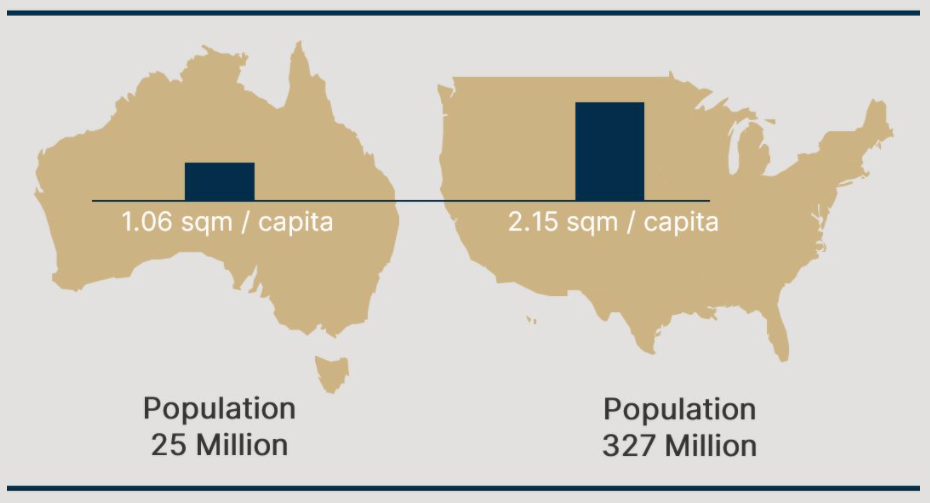Sarah Slattery is the Managing Director of Quantity Surveying firm Slattery. Sarah has more than 30 years’ experience as a QS across Australia and the UK and specialises in costing complex, design-oriented projects, namely in education, arts and culture, health and transport developments. Her expertise has seen her become a trusted advisor to significant government, developer and private clients.
In this update, Slattery provides an overview of the construction market including the volume of work nationally, the pain points across various states, labour and supply chain impacts, and what this means for cost escalation.
The cost escalation forecast and what it means
Slattery is forecasting escalation averaging 4% per annum for the next 3 years with supply chain impacts currently posing the biggest risk to projects. This is mainly due to material costs, and freight and exchange rate fluctuations driving up pricing and pushing out programmes. In this current market, extensive financial due diligence of contractors and their subcontractors is critical. The key is to ensure that contractors and sub-contractors have the suitable financial capacity to deliver projects. As an industry, we need to keep in mind that the closure of State and National borders are limiting the flow of skilled, unskilled, and seasonal migrant workers to Australia. This is creating a major skills shortage across the board which will have flow-on effects now and into 2022.
Disruption through 2020
In 2020, construction productivity decreased across most sectors due to health and safety issues relating to COVID-19 and the various lockdowns across the country causing major disruptions. To add to this, a number of projects had been completed before the pandemic hit and with a slow pipeline of work following behind it, this enforced the reduced activity in most sectors - the few exceptions being logistics, industrial, civil, and infrastructure. Despite the hype and budget commitment, there continued to be limited market activity in the Government space – apart from transport infrastructure. The promised rollouts for social housing, health, and schools took some time to get to market. With low margins and increased competitiveness, Slattery witnessed price reductions across the board – in some circumstances, north of ten subcontractor pricing per trade. The consultant space suffered also with limited opportunities in the market driving down fees. As a result, many companies reduced staff numbers, or at the very least, put a freeze altogether on recruitment. With momentum now building in 2021, we are seeing the market shift.
Volume of Work
The ACIF Construction Forecasting Council Figures on the Value of Work Done [image one], provides an overview of the construction industry. In the residential sector, there has been an uplift in residential building, driven by stimulus and short-term temporary support measures. This is unlikely to be sustained, with the stimulus soon ending, and reduced immigration reducing demand in the medium term. For non-residential building, there has been a sustained decline from the peak in 2020 over the medium term. The forecasts foreshadow a drop in demand for new Offices, Retail, and Entertainment, with Industrial building activity plateauing.
Infrastructure construction is expected to grow by 5% in 2022, as expanded government infrastructure programs fully flow through into activity on the ground. Key areas for growth include rail and electricity supply. Heavy industry including Mining is expected to increase significantly – growing by more than 5% per annum in the next 2 years, driven by expanded activity in coal, gas, and iron ore and newer areas such as hydrogen and lithium-ion. Mining has been the quiet achiever over the pandemic. ACIF reports that the total volume of work of the 4 components mentioned, will peak in the current year, at $243.1B, dipping by 0.7% in 2022 and increasing by 1.9% again in 2023. The type of work is changing, with residential and non-residential being replaced with infrastructure and heavy industry.
Cost Escalation
After a relatively flat 2020, cost escalation is real and needs to be factored into budgets. Some of the drivers behind this are:
Material and supply chain impacts
COVID-19 recovery programs intended to stimulate the economy have placed a huge amount of pressure on supply chains not only in Australia but globally
We have seen this within Steel, Joinery, Timber, Metalwork, Copper, PVC, Masonry, Reinforcement – just to name a few.
COVID-19 outbreaks have led to congestion at major ports, compounding the supply issues and increasing freight costs. Market feedback indicates shipping times from China have increased from 28 to 40 days, and the cost per container has approximately doubled from pre2020 levels. The flow-on for the supply issues are delays to the program, resulting in increased preliminaries costs and loss of income as completion dates push out.
Industrial action by the Maritime Union of Australia is impacting ports across Australia, with strike action at Sydney, Melbourne, Brisbane and Fremantle wharves, adding pressure to an already constrained materials supply chain.
Another major impact is exchange rate fluctuations for materials supplied from overseas. The AUD was buying just over 57 US cents when COVID-19 hit in March 2020 and increased to a high of almost 80 US cents in February this year, and now back to circa 72 US cents. These fluctuations play havoc with tenders for imported materials, which can make up a large proportion of a tender.
Example : Steel production and the impact
Over the past 12 months, steel production has reduced due to peak carbon emissions and disruption from COVID-19. Some reports say China has reduced steel exports by more than 50%.
In Australia, we import at least 30 percent of our steel supply, most of it from China. While both of Australia’s large steel mills have kept their prices relatively competitive compared to the world market – this is changing.
Prices for steel from China have also been hit with export taxes and the recent removal of the manufacturer’s tax rebate to compound the supply issues.
While Slattery acknowledged some of these material rises last year, tender returns indicated that the full extent of price increases was not being passed on.
Now, Slattery is seeing subcontractors and contractors qualifying their tenders for increases moving forward, for example, exchange rates or steel supply. However, projects that were locked in before these increases will be hit hard.
Labour rates and availability
The impact of EBAs, although predictable is ongoing with roughly 3-5% Year on Year increases – this automatically guarantees escalation rates of around 2% per annum.
The closure of State and National borders are limiting the flow of skilled, unskilled as well as seasonal migrant workers to Australia.
Skilled labour shortages in Australia have been an issue for some time with an ageing population and investment in apprenticeships not keeping up with demand e.g. bricklayers.
Slattery is seeing contractors using more tier 2 & 3 subcontractors in the current environment to stay competitive, which may have ramifications on solvency and quality
Margins and competitiveness
A desire to ride out the pandemic saw sharp declines in tender sums driven by reduced opportunities, resulting in margins as low as 0.5 – 1.0%.
Contractors improved competitiveness by reviewing staff salaries, negotiating non-union EBA agreements where possible, and tightening programme durations.
Trades were very competitive due to available capacity in the market and tenderers were taking on COVID-19 programme and cost risk.
Slattery continues to see competitiveness in the trades and Contractors continue to bid for work outside of their core sectors to fill their order books, but we are seeing margins for both trade and head contractors return to pre-2020 levels
Our Forecast
Slattery is currently forecasting around 4% per annum for the next three years on the mainland. Tasmania is the exception currently with escalation peaking up to 12% in FY2022. This will not be across the board and will affect projects differently. The biggest impact will be on long-term projects. When a budget was set a few years ago and has only recently been given the go-ahead, it is important to review the base price for robustness – it’s not simply a matter of updating for cost escalation.
Risks and mitigation strategies
Contractor selection
Contractors are starting to be more discerning about what they will tender on and good builders will become choosy in this market. Communicating and engaging with the builders to make sure they are interested first is key. Minimise project risks before-hand and make the tender package as attractive as possible.
Procurement selection
Clients are moving away from ECI procurement unless there is significant programme drive. While Slattery notes cost escalation impacts - contractors still need to fill their order books and on the back of a poor 2020 – will still be competitive.
Contractor and subcontractor performance
In this market, extensive financial due diligence of contractors and their sub-contractors is critical to ensure they have the suitable financial capacity to deliver projects. A major risk is insolvency. This is enhanced currently with low margins and changes to trade market pricing on projects locked in last year.
State by State Focus - Common Trends
Many impacts are common nationally, however each state is facing its own local impacts, opportunities and challenges. To read a state by state focus, access Slattery’s full report here…



















![190815_AMPCapital_ShaneOliver_715[66].jpeg](https://images.squarespace-cdn.com/content/v1/5c197a32b105982976e5e89b/1631863017693-JEM0E6HUGZU6HA0TL9DN/190815_AMPCapital_ShaneOliver_715%5B66%5D.jpeg)
































